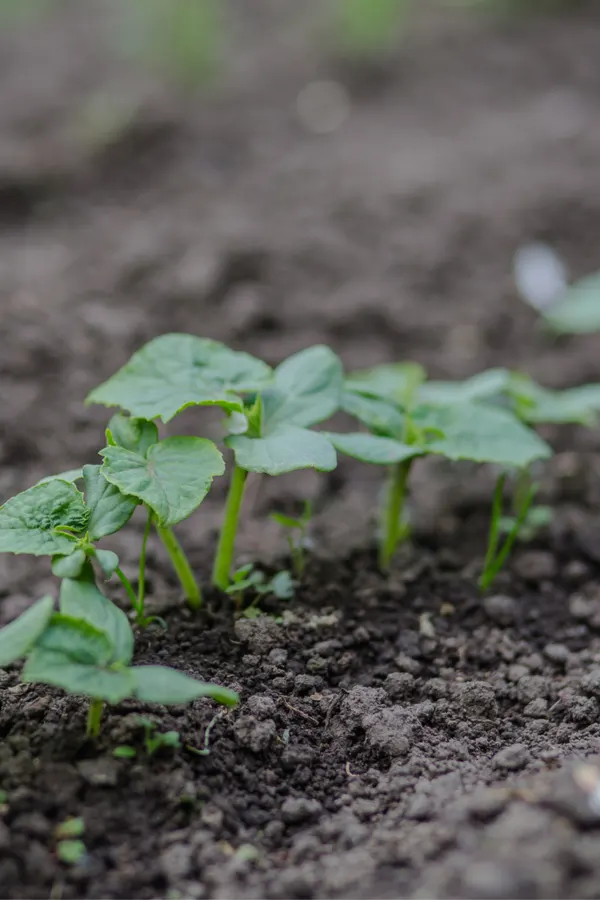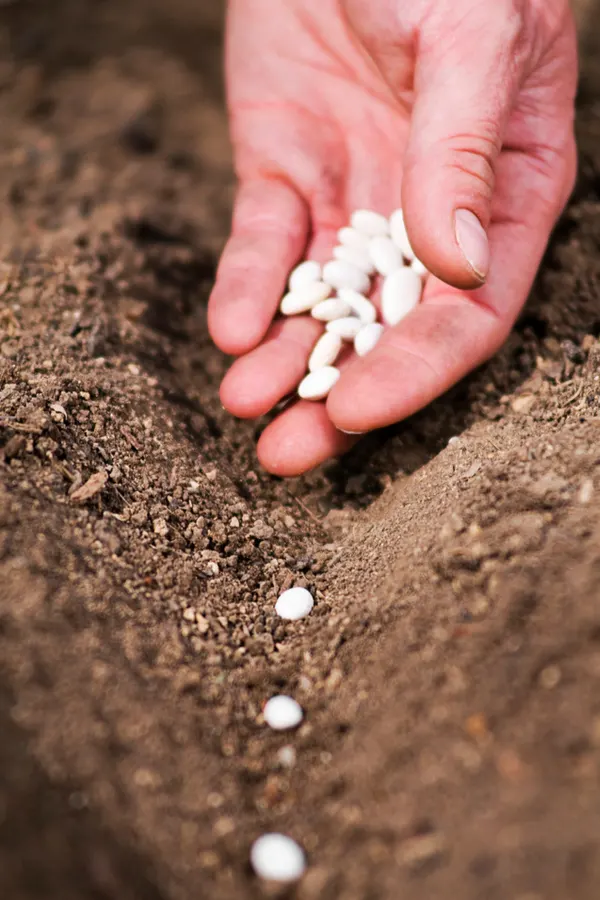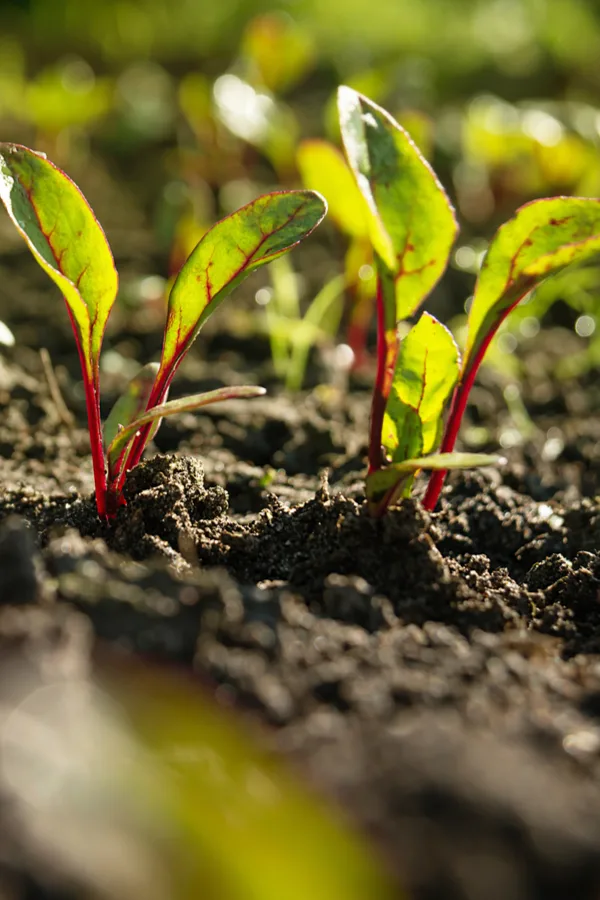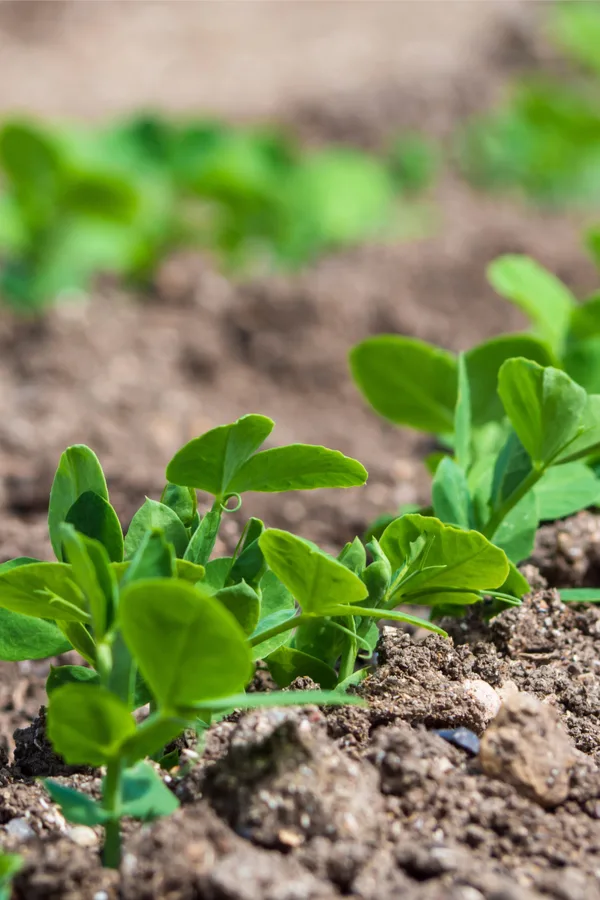One of the hardest chores for gardeners to perform is the act of thinning the seedlings in their garden. And yet, it just so happens to be one the most important tasks of all when it comes to growing healthy and productive plants!
Thinning tiny seedlings can truly be difficult for a gardener. Not only does it involve a bit of work bending or kneeling down to remove the tiny plants, it’s tough to pull the life from a young seedling. Especially one whose seed you lovingly planted just a week or two before.
But thinning truly is vital to your garden’s overall health. Without it, too many plants growing too close together will create a myriad of issues. Both for you, and your garden.

Why Overseed? – How To Thin Seedlings
Some may ask, why is thinning even an issue? Why not just plant the seed crops in your garden at the spacing you already need?
That would be a wonderful idea – if only the seeds would cooperate! When planting seeds, you just never know how many will actually germinate to become a seedling. And if you plant only the seeds you think you need and where you need them, only half may germinate.
The result is a planting row that can be sparse at best. And that is exactly why over-planting is a must for seed crops. It is insurance that your garden will always have enough plants for a good harvest.
Whether it is cucumber plants, beans, corn, lettuce – or any other vegetable plant you are planting by seed, it always best to over-plant your rows by at least 1/3 or more of extra seed.

For us, we usually plant double the package spacing requirements. For example, we know our green beans should end up with spacing about four inches between plants. With that in mind, we seed every 2 inches to make sure we have plenty of seed that will germinate – knowing we can thin later to what we actually need.
At the end of the day, it is far better to have enough than to realize a few weeks later that you have huge gaps where some seed simply didn’t sprout.
Why & How To Thin Seedlings In The Garden
Now that we have covered the why of overseeding, lets cover the topic of why thinning is so vital. On the surface, growing more plants might seem like a good thing. But unfortunately, that isn’t the case for vegetable plants.
Plants growing too close together compete for the same nutrients and minerals from the soil. And as those plants grow larger, they also compete for the same sunlight and water as well.
In addition, without proper spacing, many crops (root crops especially) can have their harvest damaged or ruined. As the vegetables grow too close to one another, they tangle and twist together.

Great examples of this are carrots, radishes and beets. When too many of these plants are allowed to live and grow close to one another, their roots can wrap together and be nearly impossible to harvest or eat.
The long and the short of it is this: no matter how difficult it can be on the brain and emotions to kill off the extra plants, it needs to be done. And with that in mind, here is a look at how to best thin your plants.
How To Best Thin Seedlings
Know Your Spacing
When thinning young garden plants, there are a couple of key tips that can really help the process to go smooth and easy. The first of those tips is to know what final spacing each of your crops require.
The best way to determine spacing is by looking at the back of your seed packets. Nearly all seed packets will have their seed spacing listed. If you don’t happen to have the seed packet, you can go online and find the information easily from most seed companies.
One of our favorites for this is the Eden Brothers Seed Company website. For each plant category and variety, they list a complete growing guide that includes plant spacing as well. Their plant details are actually a great reference for gardeners on each and every plant – from planting and maintaining, right up to harvesting.

How To Best Thin Seedlings
When it comes to the best ways to thin your plants, there are several methods that work well. No matter what, one thing is for sure, the earlier you can thin plants, the better.
For many seed crops, when thinning the crop within the first week or two after germination, you can simply pluck the seedling from the soil without issue. If allowed to grow larger, snipping off the plant at the base with a pair of sharp scissors is often the better choice.
If allowed to grow too large, the roots usually begin to tangle with other sprouting seeds nearby. By pulling them at this point, you can easily injure the nearby roots, or even pull them up with the seedling.
Thin The Weakest Plants First
Finally, when selecting which plants to thin, always concentrate your efforts on keeping the healthiest, most vibrant seedlings in place. They are the most likely of all to grow big and produce better.

Tall, leggy seedlings should be the first to go. Plants that are spindly from the beginning tend to be weaker plants as they mature. Keep the stockier seedlings that have bright green growth. The stronger a seedling starts out, the more likely it is to be a healthy producer.
More than anything else, whatever you do, get out in that garden and thin your seedlings! You will be rewarded with healthier, more vibrant crops – and a bigger harvest this summer and fall. Happy Gardening – Jim and Mary.
Jim and Mary Competti have been writing gardening, DIY and recipe articles and books for over 15 years from their 46 acre Ohio farm. The two are frequent speakers on all things gardening and love to travel in their spare time.
As always, feel free to email us at thefarm@owgarden.com with comments, questions, or to simply say hello! You can sign up for our free email list in the subscribe now box in the middle of this article. Follow us on Facebook here : OWG Facebook. This article may contain affiliate links.
